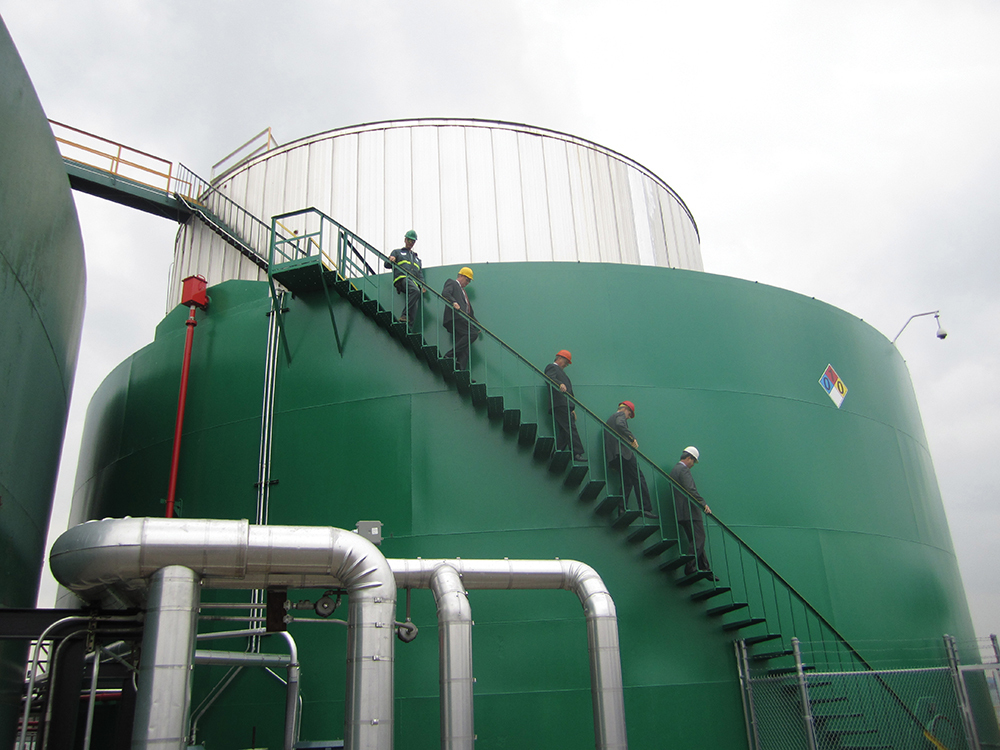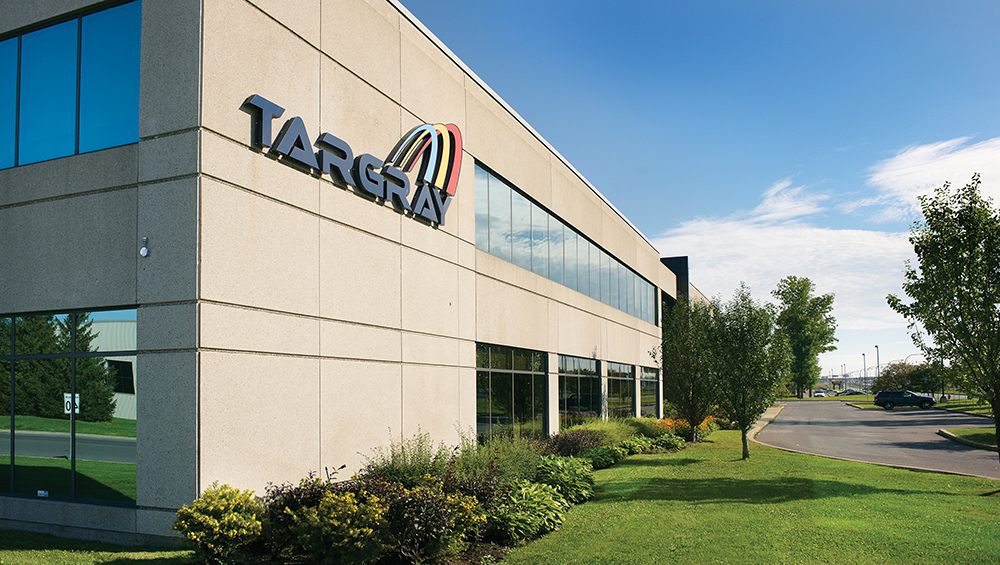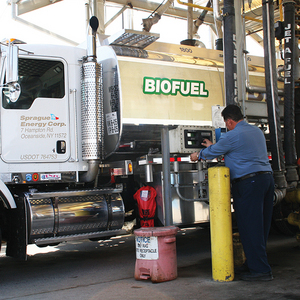US Biodiesel Supply Kings





PHOTO: SPRAGUE OPERATING RESOURCES LLC
July 25, 2014
BY Ron Kotrba
The marked increase in U.S. biodiesel production over the past several years was made possible by producers who risk investment in expansion and growth after gauging existing public policy support and private demand. To move this increased product to market, an equally important wave of investment must be made in the supply chain. Biodiesel Magazine speaks with three leaders in the U.S. biodiesel distribution space about the growth and opportunities in biodiesel distribution, and the challenges that lie ahead.
Demand for biodiesel has increased gradually over the past decade, initially as a result of its benefits in energy security, clean air, domestic job creation and federal legislation, according to Steven J. Levy, managing director of Sprague Operating Resources LLC. Levy is also chairman of the National Biodiesel Board. He shares his opinions on the U.S. biodiesel distribution chain, which may not represent those of Sprague Resources LP and its subsidiaries, or the NBB.
As biodiesel began to make inroads throughout the country, there was a price premium to diesel for biodiesel where it was typically fleet users’ demand comprised mostly of government agencies, utilities and companies seeking to support energy independence and clean air policy. “Product was distributed in a decentralized system, via truck or rail, which was not cost-effective,” Levy says. “Fuel bulk terminal capacity was scarce, if at all. Biodiesel blending was done loading a delivery truck with diesel and loading biodiesel from a transport or rail car on top of the distillate fuel or vice versa, of which the two product loadings could have been long distances apart.” Due to the lack of rack blending, Levy notes, there were issues with blends, especially during the winter months. “Over time and more recently, as demand grew with the instrumental addition of the federal tax credit, the renewable fuel standard (RFS), and some state and local legislation, we witnessed infrastructure investment,” he says.Expanded infrastructure, with additional storage facilities, increased railcar availability and transportation via barge, resulted in reduced costs and reduced risk of product outage. “Over the past several years as well, there has been an increase in biodiesel suppliers and retailers at all levels of the supply chain, national, regional and local, investing in infrastructure and increased inventory capacity.” This resulted in increased local inventories and biodiesel being more widely available. An additional result is the multitude of various pricing mechanism strategies affording resellers and end users pricing options, Levy explains.
Ultimately, there are several factors that have contributed, and continue to contribute, to the growth of the biodiesel industry. The first factor is the fuel quality acceptance of biodiesel by the petroleum industry, says Michael Devine, Amerigreen Energy Inc.’s New England sales and marketing consultant. “Many, if not a large majority of, petroleum marketers are not going to risk any fuel quality issues with their ratable customers,” Devine says. “Second would be the entrepreneurial opportunity for petroleum marketers to diversify their fuels products with a cost-effective, high-quality renewable fuels offering to the diesel and heating oil markets.” Finally, like Levy, Devine says the growth of U.S. biodiesel distribution is attributable to the successful implementation of the RFS and the biodiesel federal blenders tax credit. “These programs have created a competitive market environment where biodiesel makes sense to blend for the downstream distributor, from an economic standpoint,” Devine says.
Increased demand for clean fuels along with strong energy policies played key roles in stimulating infrastructure investment. Companies and government agencies were demanding biodiesel for its environmental benefits. While RFS and the biodiesel tax incentive have been particularly important, state policies such as the Minnesota requirement—which, on July 1, was the first U.S. state to jump to 10 percent—New York City’s BioHeat program and California’s low carbon fuel standard have also triggered investment. “These policies were, and continue to be, crucial to expand biodiesel use in the U.S.,” Levy says.
Being a market leader with a history of introducing new cleaner fuels and programs into the marketplace, Sprague invested in biodiesel as it saw the opportunity to be one of the first suppliers of the clean-burning, sustainable fuel. “We are proud of the role that Sprague has played in the biodiesel industry from beginning to sell biodiesel in the early 2000s, to becoming the first recognized BQ-9000-certified marketer, to today becoming one of the leading suppliers of biodiesel in the Northeast,” Levy says. Sprague has also played an important industry role by participating in many industry associations, as well as developing biodiesel use and education through its broad customer base including wholesalers, government, utility and private company users.
“What is truly remarkable about our country is when opportunity knocks, people will invest and begin new businesses,” Levy tells Biodiesel Magazine. “The growth of this new industry is directly attributable to the opportunity created in industries that saw the biodiesel potential, coupled with government policy to assist a startup industry while affording many businesses to be on the right side of environmentalism.”
Advertisement
The aforementioned policy incentives on the state and federal level have been key, but Levy adds that the NBB industry leadership was equally important to the industry’s success in order to facilitate education, product quality standards and demonstration projects proving the uniqueness and use of the product. “Once established, entities nationwide—both household names and small individual businesses—were established to produce biodiesel to help our country reduce emissions and become more sustainable and energy independent, while also resulting in critical job creation and putting people to work,” Levy says. “Today the success of biodiesel is attributed to the individual companies, both large and small and not necessarily a producer, marketer or retailer, or one company or business segment. They are also terminal operators, equipment manufacturers, transporters and used oil and grease collectors, to name just a few.”
Steve McCracken, president of Amerigreen, says his company recognized a gap between the biodiesel producer and the downstream petroleum marketer through to the consumer. “Connecting these dots throughout the supply chain has created a sustainable business plan for our distributors, which makes the process of marketing and distributing biodiesel an easier integration,” McCracken tells Biodiesel Magazine. “Our model continues to improve as our distributor base continues to grow. We customize each relationship around the current model of each distributor, and ultimately the success comes through understanding the logistics and market opportunities of the individual distributor and applying the Amerigreen lessons learned through our own experiences with our own customers.”
Challenges
Back in the early 2000s, biodiesel may not have been ready for “primetime,” as Levy says, due to the product quality issues in producing, transporting and blending biodiesel. “This is not true anymore,” he says. “Biodiesel is a premium, consistent high-quality product when purchased and blended from a reputable source. Over the years, the majority of producers have become accredited by the BQ-9000 program.” Furthermore, ASTM standards have improved to correct early quality issues experienced in the field. While quality may no longer be an issue—a big accomplishment of which the industry should be proud—other challenges to the distribution system exist.
For the past several years, the biodiesel industry has been railcar constrained for a number of reasons, including growth in domestic energy production, thanks first to a boom in the ethanol industry and, more recently, because of the significant exploitation of shale oil in the Bakken and other regions. What this has traditionally meant, according to Targray President Andrew Richardson, is that producers with railcars would sell until they ran out of railcar capacity. Then they would switch to selling by truck to cost-effectively serve only the local markets. “This situation leaves value on the table at both ends of the supply chain,” Richardson tells Biodiesel Magazine. “Producers are unable to access higher-priced markets and buyers in remote markets may go without product, or have very few choices.”
Levy says the issue of railcar supply shortages more recently became apparent after the coldest, longest winter experienced in the U.S. in a long time. “Railcars at times were extremely delayed or could not be located,” Levy says. “This seemed to be more prevalent on the coasts. If it weren’t for imports and increased biodiesel inventory at the expanded storage terminals, this could have been a supply issue.”
Targray has deployed a biodiesel-specific fleet of railcars to add value and improve logistics in the business. “We’ve worked with producers who had never shipped a gallon by rail before and have completely changed their business and target markets by spotting Targray railcars at their plant,” Richardson says. “This is the definition of value creation.” At the end of 2013, Targray had more than 60 dedicated railcars under service. “With railcar lead times in the 12 to 24 month range, this represents a sizable investment in the future of the biodiesel business,” he says. Richardson says Targray is adding cars at a rate of about 40 per year for the next several years. “Operating a dedicated fleet allows us to create new value for both producers and customers in the bio space,” he says. “This results in increased competitiveness for the fuel buyer.”
In 2014, Targray began holding inventory in California to serve its customers. “Some of our customers needed more ratability than railcar deliveries could provide, so holding this was the natural next step for us in creating value for our customers,” says Richardson. “Holding 400,000-plus gallons of inventory is a large investment, but it allows us to effectively serve a new segment of the business.” The Bakersfield, Calif., location was selected due to its ability to serve both the northern and the southern portions of the state.
Advertisement
Today, infrastructure investment expansion and improvements have slowed due to the uncertainty of the tax credit and the RFS. Both of these policies are essential for continued growth and stability to incentivize more companies to continue to invest in distribution and blending infrastructure, according to Levy, to reduce costs and make biodiesel competitive economically.
“The major obstacle is instability, stemming from policy uncertainty,” Levy says. “And unfortunately that instability creates something of a vicious cycle that ultimately makes biodiesel more difficult and costly to distribute, and therefore less competitive with petroleum. Quite simply, in addition to other segments of the industry, oil companies have not yet seen a compelling reason to invest the time and resources into expanded biodiesel infrastructure because policies vacillate so much from year to year. We finally were starting to have some stability around the RFS, for example, until the EPA released this curveball proposal in November that would significantly cut biodiesel production in the U.S. The entire industry simply won’t invest when they see that type of uncertainty.”
An additional challenge is biodiesel’s acceptance by pipeline companies, Levy says. It has been tested by many pipelines and it is now being determined what the allowable limits will be to transport biodiesel on pipelines that also carry jet fuel. The outcome on that issue could significantly improve distribution and afford improved economics.
“Biodiesel is still a young industry and, to some, a boutique fuel,” Levy says. “Although it has grown immensely, there are suppliers who treat biodiesel as a traditional fuel relating to supply, distribution and blending. There are certain handling guidelines to follow and until biodiesel becomes an even more stable industry, suppliers should have quality control practices in place.”
One challenge, Levy adds, is to be sure everyone in the supply chain is receiving the biodiesel content in the distillate fuel they desire. “Whether there is no biodiesel content so they may blend to their desired level, or a percentage they can verify should they decide to blend to a higher blend level, ongoing testing is a prerequisite,” he says.
Another key component for the future is that the public and policy makers continue to be educated about the use and benefits of biodiesel. Levy says this includes NBB’s valuable educational programs and demonstration projects to further the expansion of biodiesel in OEMs and also to educate policy makers and users about the benefits and advantages of biodiesel and Bioheat. “I firmly believe that if the National Biodiesel Board was not leading the industry, we would not be where we are today as the only commercial-scale advanced biofuel produced nationwide,” Levy says.
In the biodiesel space, customer and suppliers want to do business with counterparties who do what they say they are going to do. “This has been one of the simple mantras for our business for the past 25 years,” Richardson says. “Our size as well as our experience selling to some of the largest companies on the globe has made us readily accepted as counterparty by both the large refiners and national blenders. The biodiesel business is a trust and reputation business, and Targray has been working hard to create value for our customers and suppliers.”
Reputation is important, clearly, and keeping one’s word is critical to building trust and investment. Ultimately, the U.S. biodiesel industry needs Congress and the White House to stand firmly behind strong energy policies that are in place, Levy says, so the fuels industry has some reasonable certainty of what the rules of the game will be and can make investments accordingly. These subject policies should be for multiyear periods, three to five years, to afford investors a degree of certainty in market dynamics.
Author: Ron Kotrba
Editor, Biodiesel Magazine
218-745-8347
rkotrba@bbiinternational.com
Related Stories
Montana Renewables LLC has delivered its first shipment of 7,000 gallons of SAF to Dearborn, Michigan's Buckeye Pipeline facility. From there, the fuel will be transported to the Detroit Metropolitan Airport via pipeline for use by Delta Air Lines.
NYC took a monumental step towards clean air and a sustainable future on Jan. 11 with the grand opening of the city's first retail fuel station dispensing renewable diesel. The project is a collaboration between Sprague and Sonomax.
The USDA on Jan. 11 awarded $19 million under the Higher Blend Infrastructure Incentive Program. The grants will support projects in 22 states to expand the availability of higher ethanol and biodiesel blends.
Jet Aviation partners with World Fuel Services to offer SAF in Bozeman, Montana, and Scottsdale, Arizona
Jet Aviation announced on Dec. 22 that it has signed an agreement with World Fuel Services to secure and offer sustainable aviation fuel (SAF) on-site at its FBOs in Bozeman, Montana, and Scottsdale, Arizona, effective immediately.
Neste has partnered with Coleman Oil Company, a leading provider of fuels, biofuels, lubricants, and related products, to enable cities and businesses to have easier access to Neste MY Renewable Diesel in the state of Washington in the U.S.
Upcoming Events










